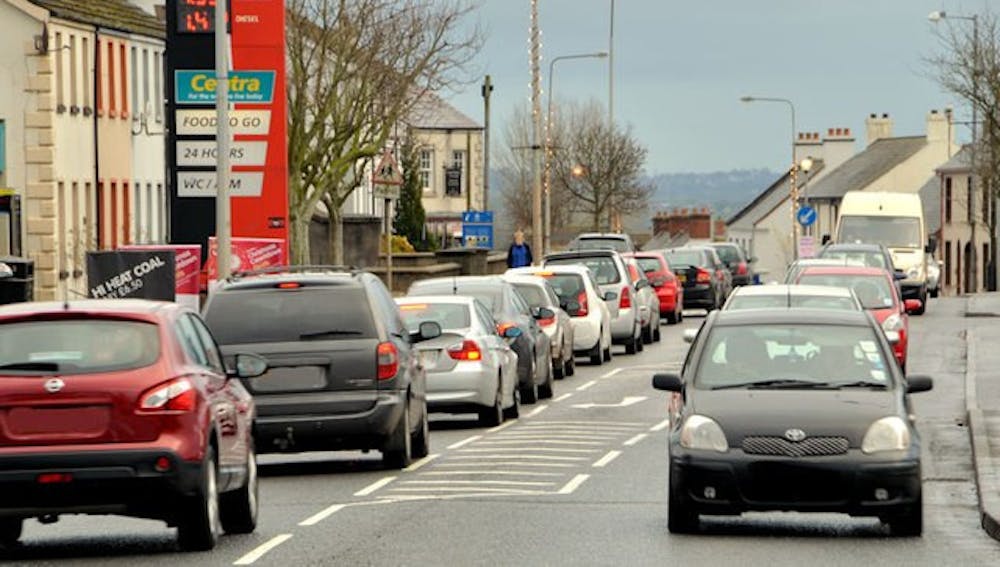A city gets its personality from its people — likewise, people are heavily influenced by where they call home. In the complexity of modern life, we often forget about this simple, symbiotic relationship — what we give to our city is what we get. In this light, making cities more walkable and pedestrian-friendly gives back to a city that has already given us so much. Walkable infrastructure would reduce the cloud of dust and carbon by reducing the number of vehicles on the road, while also providing pedestrians with the opportunity to enjoy the cities culture and history in a different way. While my romanticized aspirations for walkable infrastructure giving life to a city may sound fanciful, there are indeed tangible health and economic benefits of building more walkable cities: cleaner air and less congestion as well as economic mobility for historically marginalized communities.
The American metropolitan centers were always designed to facilitate car traffic, with little room for pedestrians to walk. With the expansion of American urban spaces during the automotive boom of the early 1900s, infrastructure facilitating cars was the need of the hour. While this undoubtedly was a factor in the country’s economic growth, it came at a price. There were more cars on roads that couldn’t support them, and these cars contribute to climate change as carbon-producing hotspots. It is not surprising that, if the nearly 280 million cars, SUVS and pick-up trucks on American roads were its own “country,” they would be the sixth-largest emitter of greenhouse gas emissions in the world. A walkable community less dependent on cars could help mitigate the impact of transportation on climate change.
It is, however, unrealistic to direct everybody to abandon driving — no one is asking you to walk your 30-mile commute from your house in the suburbs to your office on main street (there’s public transport for that!). It’s shorter drives, to whatever destination, that possess the ability to be walkable. A pedestrian-friendly city, with protected sidewalks, proper crosswalks across major public roads and clear marked signs, could help promote folks to leave their gas guzzlers and walk their commute — if nothing else, just the thought of sitting in an unmoving car on Pratt Street at the exit of I-95 should be motivation enough! Not to mention the immense health benefits from walking, including reducing the burden of chronic diseases like heart disease and diabetes, as outlined in a report by the Surgeon General of the United States. Fewer cars for shorter distances would reduce emissions, make our air cleaner and let those with longer commutes get on with their day!
In talking about public infrastructure, it would be remiss of me to not mention my undying love for public transportation. While you may see me sportingly don a Metro-themed holiday sweater on occasion or have had the bad luck of being subject to my intricate plans of getting to obscure destinations in the cheapest way possible, I would be doing a disservice to those affected if I didn’t mention the state of transportation inequity. Baltimore is no stranger to a lack of transportation for historically marginalized communities — just pick up a bus map of the city one day and see where most buses are concentrated. A lack of transportation can be stifling to economic growth and can leave communities stuck in a cycle of poverty. Walkable infrastructure, while not a substitute for reliable public transportation, can be a form of equitable transport embraced by all. It will hopefully not be subject to partisan problems that have terminated projects for reasons only known to those in power.
Investing in walkable infrastructure, which adds to existing roads and doesn’t require major engineering like light-rail or Metro projects, can bring back life to neighborhoods where residents may have also given up. By improving connectivity between hubs like grocery stores, medical centers and schools, while also greatly improving accessibility to small businesses, simple investment could see an absolute revitalization of neighborhoods. During my work with the 21st Century Cities Initiative at Hopkins, an organization that fields the annual Baltimore Area Survey, I learned, through analyzing people’s responses in (now) publicly available data, the extent to which people have felt “let down” by infrastructure projects that see no fruition. It is truly disheartening to see the strain on relationships that a lack of access to transportation can create — a problem that can be alleviated through investment in equitable walking infrastructure.
Any progress towards change begins with accepting the problem first. If community leaders and government officials can accept that a car-centric 20th-century model of urban planning cannot work for a city with a growing population and many historically marginalized communities, we may finally see the improvements we so desperately need. It may not be the flashiest of improvements, but it’s bound to not get in your way (whether you’re driving, biking or walking). It has the potential to reduce cars on the road (with the optimistic in me hoping to see its effect on climate change), make us healthier and bring life to communities that need it the most. And if these reasons are not enough, if you’d indulge the romantic in me just one last time, what better way to take in a city than by walking through it?
Raghav Agrawal is a sophomore majoring in Economics and Environmental Studies from Mumbai, India.





